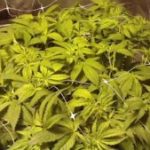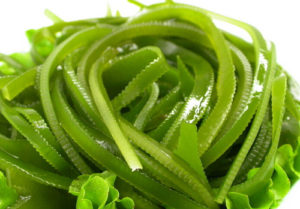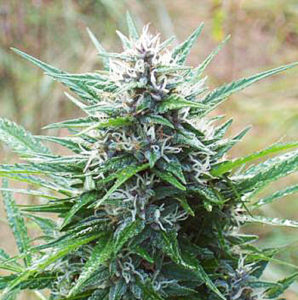Growing marijuana indoor is great. I just love the process of growing! Not only is it a fun and rewarding hobby on its own, growing your own supply of marijuana saves tons of money compared to buying it. Plus, you basically get access to unlimited amounts of the highest quality weed!
What could be better, right?
Well, there is one big problem with growing… the fact that growing marijuana is either totally or at least partially illegal in most parts of the world! Not everyone can construct a secret grow room behind a bookcase, but in this stealth tutorial, I will share a few simple but effective strategies that make it almost impossible for anyone to discover your marijuana plants.
For your security, it’s vitally important to do everything in your power to keep your cannabis garden a secret. If you want to avoid detection, you have a responsibility to become not just reactive, but incredibly proactive to make sure you are not giving off any signs that could possibly hint that you’re growing.
In most parts of the world, cannabis is illegal or at least semi-illegal to grow. Even in places where weed is legalized in some form (for example, the 29 medical marijuana and 8 adult legalization states in the U.S.), there are still federal guidelines that mean you can get arrested for cannabis possession or cultivation, even if you’re following all the local laws. It’s true that federal officials very rarely go after small-time growers who aren’t selling, but it’s better to be safe than sorry by keeping your grow a secret from everyone.
A Secret Grow Space is a Secure Grow Space
So, if you are lucky enough to live in a state with legalized marijuana cultivation, I strongly caution you to still take the necessary precautions and keep yourself out of watchful eyes. These rules may sound a bit overly protective, but they’ve allowed me to grow without any legal problems since I started growing over a decade ago.
Remember, even if sticking with some of these rules can be a pain, nothing is worth spending time in jail!
Here goes…
Rule 1: Never Tell Anyone, Not Even Your Friends, That You’ve Started Growing Weed
I know, I know, this is common sense, right? But unfortunately, it’s not. Telling the wrong person is the number 1 most common reason growers get caught or ripped off.
Hobby growers rarely get caught by helicopters with thermal cameras or RF interference from grow lights. At least, not compared to how many growers get caught from letting their secret out to someone they couldn’t trust. If you want to prevent the number one reason growers get caught, you should never, ever tell a soul that you grow marijuana. No excuses.
Here’s my “never get caught, ever, for growing weed” policy: You can never trust someone else as closely as yourself. If someone isn’t actually growing marijuana with you, as a partner-in-crime so to speak, there is no reason to tell them about your growing activities. If someone asks you where you got your weed, tell them you’d rather not talk about it and leave it at that. Better yet, don’t tell them you smoke at all if you can avoid it. Remember: If you can’t keep this incredibly important secret to yourself, how can you trust other people to keep it to themselves?
Don’t ever give hints that you know how to grow weed. If you encounter others who are talking about growing, bite your lip and act dumb!
Rule 2: Be Smart When Ordering Marijuana Seeds Online
It’s a good idea to avoid shipping marijuana seeds to the same place you’ll actually be growing your weed if possible. However, most growers don’t have that option, including me. As a result, I have always shipped seeds directly to my house without a problem, and that seems to be what most growers do. Still, I highly recommend paying a few extra bucks for the “stealth shipping” option the next time you order seeds. Most reputable seed banks offer this. Stealth shipping usually comes with a guarantee (they’ll reship seeds if you don’t get them), and seeds are much less likely to get confiscated during shipping because they’re hidden.
I have had my seeds confiscated a couple times over the years. The seeds were taken and the empty package arrived with a letter saying that cannabis seeds are not allowed to be shipped into the US. I understand that this happens to many growers and seed banks will usually reship the seeds if you show them the letter.
However, once you receive seeds that were shipped via stealth shipping, you’ll understand why it’s difficult for someone to intercept the package. I once actually received my seeds and the package had been opened, but Nirvana had done such a good job with the stealth packaging that the officials didn’t see the seeds and just sealed the package back up and sent it to me.
Rule 3: Consider All Sounds, Smells and Light That Come from Your Grow Space
Block all windows with light-proof fabric or blackout curtains. The incredibly bright (and unusually colored) grow lights that are needed to grow marijuana can be a dead giveaway that someone is growing weed inside, so you want to block any light from being seen outside.
A newly popular type of cannabis grow light, LECs (despite the similar name, they’re completely different from LEDs), have the benefit of producing a white-colored light that can appear less suspicious to an outsider than the harsh yellow light of HPS or the purple/pink-tinted light of most LEDs. LECs are performing surprisingly well for growing cannabis, and as a bonus, the crisp, white light makes it easier to take nice pictures of your plants.
As far as sound, grow lights can give off a hum, but usually small fans, exhaust fans, and air/water pumps for hydro are the pieces of equipment that make the most sound when growing cannabis indoors. Powerful exhaust fans can be the worst sound offenders. If you have a roommate, if you share a wall with a neighbor, or if you’ve put your grow tent in your bedroom and want to sleep at night, you need to be especially careful how you hang your exhaust fan. Additionally, try to get high quality, quiet fans, and prevent air or water pumps from sitting directly on the floor as the vibration can travel. As far as smells, a big thing to remember is that you will get used to the smell of flowering plants, so don’t think that the smell isn’t there just because you can’t smell it. Some strains are high-odor, while other strains are low odor or just do not smell much like typical marijuana.
Low-odor strains include Northern Lights, Papaya (smells tropical), Jock Horror, Ice (smells like jet fuel), and Blue Mystic. Smells are usually more intense when things get hot and humid, and as you approach harvest time. If you’re venting air outside, control odors in the vented air with a carbon scrubber. This is something that air passes through which will remove the odors before they go outside.
Learn all the ways to prevent smells from leaking out of the grow space.
Rule 4: Be Smart About Comings and Goings to Your Home or Grow Area (especially with lots of growing supplies).
Even if you’re not actually selling anything, neighbors can be surprisingly alert about what you’re doing. Remember that.
If some bored neighbor is watching you, it’s going to seem weird if you’re going in and out of your house with pots, nutrients, big bags of soil or soilless grow mix, etc., especially if you don’t actually grow anything besides marijuana. That’s why one of the best covers for growing weed is growing a few other plants, whether it’s flowers, vegetables, fruits, etc. I keep a few flower pots with random flowers on my balcony, some rose bushes, a lime tree, and a pink jasmine plant. All this gardening is an ideal cover for growing weed.
If that’s not an option, make sure you are not observed when you come and go with supplies. Moving equipment at night helps as does covering your items with trash bags before bringing them in. Or better yet, consider ordering your supplies online. I order “suspicious” items online from Amazon.com because usually, you can pay a bit extra for them to gift wrap your items. That way you can feel extra sure no one will be able to see what’s inside the box until after it’s inside your house.
Rule 5: Avoid House Guests
Ok, I know that’s a bit over-the-top, but how about this: if you don’t trust someone with your life, and it’s possible for them to find your weed if they’re nosy, don’t let them come anywhere near your grow. This means that at the very least, you should lock the door to your grow room and don’t let people anywhere inside or near if possible. I’m not saying that you should be suspicious of all people; in fact, I believe that most people are good when they aren’t under duress. However, many times it’s the case where they didn’t mean anything, but they told someone who accidentally told the wrong person.
Picture this:
Your friend ‘Dan’ asks why your bud is always “soooooo much better” than what he gets even with top-shelf, so you let him in on a little secret: “It’s because I grow it myself and dispensaries have got nothin’ on me!”
Later on, Dan, now proud of his friend with such amazing weed-growing prowess, goes to smoke with his friend Carla.
Carla asks, “Isn’t this the best weed you ever smoked?”
Dan replies: “Not even close. This stuff is okay, but my friend grows the best stuff you’ve ever had!”. Just then, Dan remembers you explicitly telling him to not tell anyone about your grow. You can’t blame Dan for being excited for you, but your secret is out now, and Carla doesn’t have any incentive to not tell people about what you’re doing.
If you’re serious about privacy and stealth, I strongly recommend no more guests inside your home until after you’ve completely secured your grow area against visitors being able to access it. If someone isn’t growing with you in a place you share, they shouldn’t know about the grow. Simple as that.
Rule 6: Consider That Helicopters with Heat Cameras Can Fly Over Your House
Law enforcement officials may sometimes search for unusual heat activity to discover marijuana grow operations. The intense heat given off by big grow lights (especially when there’s many of them) is a dead giveaway that something unusual is going on.
If you have a large indoor garden, then you already know how hard it can be to control the heat. Controlling heat is good for your plants, but you also need to do it to avoid getting caught. If your grow light is big enough to make it hot in your grow room, you will greatly increase your security by investing in a good exhaust system that pulls hot air out of your grow room and vents it outside (but make sure you don’t forget Step 3, get a carbon scrubber to ensure you’re not venting out the smell of your flowering plants). Good heat ventilation also makes growing less suspicious in your house. That being said, no amount of exhaust will totally offset the heat generated by a grow operation (smaller grows aren’t as easy to detect).
For growers with icy winters, try not to vent out where there is snow, as the lone melted spot from the exhaust heat can look suspicious. Learn more tips about growing indoors in cold climates. Another option is to choose smaller grow lights that give off less heat.Small LED panels, 315 LECs, 250W HPS and CFL bulbs are relatively low-heat grow lights which can still produce many ounces of great bud. They work especially well when one is growing a few plants in a relatively small space, though these smaller-sized grow lights generally aren’t suitable for huge grow operations (where you’d want full-size versions of LED, LEC, or MH/HPS grow lights).
No matter what setup you have, you can employ advanced growth control techniques to produce better yields by using your current grow light more efficiently.
Rule 7: Use Your Common Sense
It’s easy to get comfortable after a while if you’ve been growing weed for a long time.
It’s important to remember that, while medical and adult-use marijuana has been legalized in many areas, it is still considered illegal to grow marijuana in much of the world.
Never let your guard down!
Don’t spend your life behind bars
I’ll admit there may have been a bit fear-mongering in this article. It’s only because I care about the freedom of all growers and want you to be safe and secure so you get to enjoy the fruits of your labor! If you want to get access to cheaper and better-quality cannabis than what you’ll get from your typical dealer or dispensary, growing your own supply is the best way to do it!



 There are numerous studies showing that seaweed kelp extract is beneficial for heat-stressed plants when used as a supplement. Seaweed kelp extract (available as a liquid or powder) has been shown to increase yields, growth rates, and heat resistance in plants experiencing environmental stress.
There are numerous studies showing that seaweed kelp extract is beneficial for heat-stressed plants when used as a supplement. Seaweed kelp extract (available as a liquid or powder) has been shown to increase yields, growth rates, and heat resistance in plants experiencing environmental stress.

